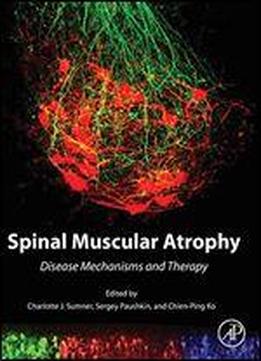
Spinal Muscular Atrophy: Disease Mechanisms And Therapy
by Charlotte J. Sumner /
2016 / English / PDF
33.4 MB Download
"Spinal Muscular Atrophy: Disease Mechanisms and Therapy" provides the latest information on a condition that is characterized by motoneuron loss and muscle atrophy, and is the leading genetic cause of infant mortality. Since the identification of the gene responsible for SMA in 1995, there have been important advances in the basic understanding of disease mechanisms, and in therapeutic development. This book provides a comprehensive accounting of recent advances in basic and clinical research that covers SMA clinical features and standards of care, multifaceted aspects of SMN protein functions and SMA disease pathology, various animal models, and biomarkers, as well as current therapeutic development. This title is ideal for graduate students/postdocs and principal investigators who are already in the SMA field and need to keep updated on recent findings and approaches, and for those who are new to, or would like to join, the field. Likewise, users will find an excellent source of reading for biotech/pharma scientists, clinical researchers, and practitioners, regulators, and patients and their advocacy organizations. Furthermore, this book is a handy reference for researchers and clinicians who may want to apply the research strategies and therapeutic approaches in SMA to other rare diseases. Provides comprehensive, up-to-date reviews by leading investigators on diverse topics of SMA, including clinical features and patient care, SMN genetics and protein functions, animal models, disease pathology and mechanisms, biomarkers, current therapeutic development, and the role of non-profit organizations in therapeutic developmentWritten to bridge multiple disciplines and promote better communications among basic scientists, clinical researchers, and health care providers on the latest developments in SMAIncludes outstanding questions and perspectives for future investigations and key references for additional detailed study











